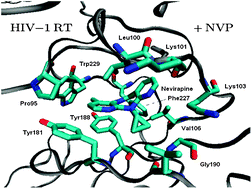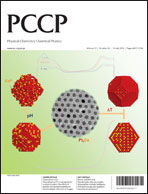Modelling the binding of HIV-reverse transcriptase and nevirapine: an assessment of quantum mechanical and force field approaches and predictions of the effect of mutations on binding†
Abstract
The importance of the intermolecular interactions which contribute to the binding of


 Please wait while we load your content...
Please wait while we load your content...